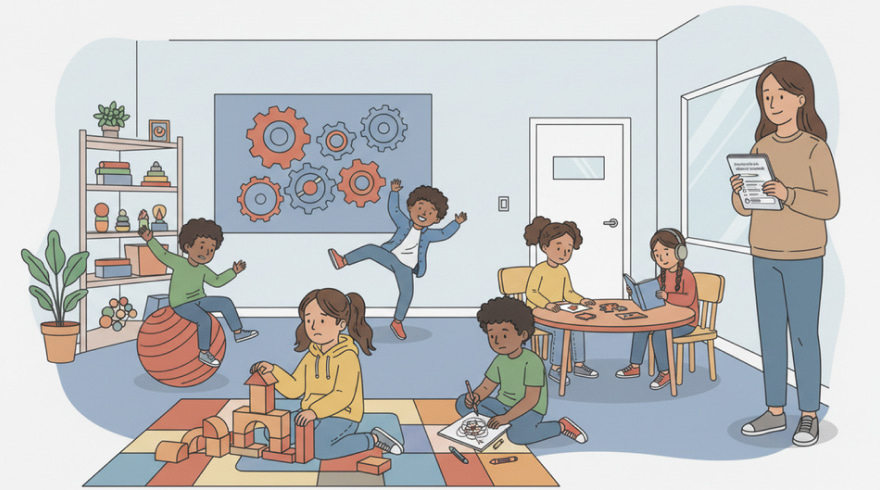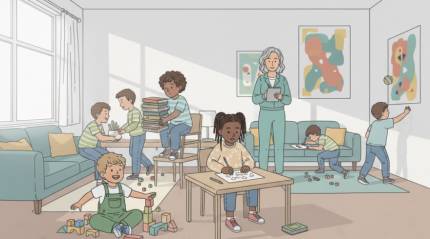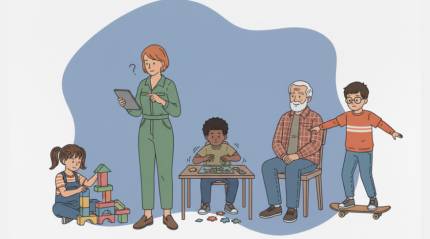ADHD Questionnaires for Kids: A Complete, Parent-Friendly Guide
- 20 October 2025

Understanding Screening and Why It Matters
Early identification of attention, hyperactivity, and impulse-control concerns helps families and educators respond with empathy and structure. A well-designed screening tool does not diagnose; instead, it organizes everyday behaviors into patterns that a clinician can interpret. By translating observations into clear scores, these forms provide a common language that reduces confusion, supports timely referrals, and keeps discussions focused on practical supports rather than labels.
Because attention traits can fluctuate with sleep, stress, and classroom demands, caregivers often want a snapshot that captures multiple settings. Many clinics begin intake by reviewing the ADHD questionnaire kids with caregivers and teachers to document consistent strengths and challenges across environments. This shared starting point improves collaboration and helps families prepare notes about routines, learning history, and any co-occurring concerns such as anxiety or learning differences.
Parents sometimes feel anxious about “getting it right,” yet screening should feel manageable, respectful, and culturally sensitive. Good forms are written in plain language, map to DSM-5 criteria, and invite examples, not just numbers. When results are discussed, the focus should land on functional impact, getting ready for school, following multi-step directions, and keeping materials organized so that recommendations match real-world needs. With that frame in place, the process becomes less intimidating and more actionable.
- Screening is a conversation starter, not a diagnosis.
- Multiple observers reduce bias and increase accuracy.
- Clear examples of behavior make scores more meaningful.
- Results inform next steps, ranging from classroom tweaks to comprehensive evaluations.
Core Components and What They Measure
Most rating forms cluster items into three domains: inattention, hyperactivity, and impulsivity. Inattention items cover details like losing materials, distractibility, difficulty sustaining focus, and trouble following instructions. Hyperactivity items address restlessness, fidgeting, and a persistent drive to move. Impulsivity items track blurting out answers, interrupting, and difficulty waiting for turns. Well-validated tools use frequency scales never, sometimes, often, very often to support consistent scoring and allow progress monitoring over time.
Multi-informant perspectives matter, because behavior can look different at home and at school. Researchers often reference a child ADHD questionnaire to compare patterns across contexts and ages within structured studies. Teacher reports capture academic demands and peer interactions, while caregiver reports reveal routines, play, and transitions. Some forms also include youth self-reports once children reach an age where insight and vocabulary support meaningful responses.
Beyond core symptom items, comprehensive tools may screen for co-occurring issues sleep disruption, mood, learning hurdles, or executive function lags like planning and working memory. That breadth helps clinicians consider differential diagnoses and prioritize which supports should come first. Importantly, good forms document both challenges and strengths, highlighting perseverance, creativity, humor, and empathy, which are essential for balanced care planning and resilient family narratives.
- Inattention: organization, sustained focus, forgetfulness.
- Hyperactivity: movement, restlessness, difficulty staying seated.
- Impulsivity: interruptions, turn-taking, blurting.
- Executive skills: planning, time management, working memory.
Benefits, Limitations, and Ethical Use
Questionnaires shine when they translate subjective observations into comparable data points. Standardized items and norms help professionals determine whether the frequency and intensity of behaviors sit within expected ranges. This structure also supports progress tracking: a classroom intervention can be implemented, and the same scale re-administered weeks later to see whether change occurred. Families appreciate seeing trends summarized in charts or brief narratives, which make discussions with schools more productive.
Limitations exist and deserve explicit acknowledgment. In primary care and school settings, the pediatric ADHD questionnaire offers efficient triage but cannot substitute for a comprehensive evaluation when concerns are complex. Cultural context, language differences, and unique family routines can influence how items are interpreted and rated. Single-informant forms risk bias; hurried completion can undercut reliability; and symptom overlap with anxiety or trauma means scores should be interpreted thoughtfully.
Ethical use centers on consent, confidentiality, and transparency. Caregivers should understand how information will be stored, who will view it, and what decisions the results might influence. Children benefit when adults explain the process in age-appropriate terms, framing questionnaires as tools to make school and home life smoother. Above all, forms should guide supportive action classroom accommodations, skills coaching, and family education rather than become a gatekeeping barrier to services.
- Use multiple informants whenever possible.
- Pair scores with concrete examples and context.
- Reassess after interventions to track change.
- Protect privacy and share results respectfully.
How to Use a Questionnaire Responsibly
Getting the most from a rating form involves careful timing, clear instructions, and thoughtful follow-through. Start by choosing a validated tool that matches the child’s age and language needs. Invite both caregivers and teachers to complete the forms independently, and encourage specific examples to accompany any “often” or “very often” items. Consistency matters: complete ratings within the same week if possible, and avoid days with unusual stressors that could distort typical behavior.
Before scheduling a specialist consult, many families gather observations across settings to understand where supports could help most. Some caregivers try an ADHD questionnaire child to clarify patterns around homework routines, social dynamics, and bedtime transitions. Once results come in, set time to review themes, not just totals, and discuss a short list of practical changes to test for several weeks. The goal is to turn data into action that feels realistic and compassionate.
| Informant | What they observe | When it helps most | Caveat |
|---|---|---|---|
| Caregiver | Routines, chores, play, evening transitions | Understanding home stress points and sleep impacts | May underreport school-specific challenges |
| Teacher | Focus during instruction, peer interactions, work completion | Documenting academic impact and classroom behaviors | Limited view of mornings, weekends, and bedtime |
| Self-report (older child) | Internal distractions, motivation, task interest | Capturing insight into triggers and strategies | Depends on age, insight, and language |
- Complete forms during a typical week.
- Add brief examples for high-frequency items.
- Share summaries with your clinician and school team.
- Revisit after adjustments to measure change.
Interpreting Scores and Next Steps
Scores highlight patterns, but meaning emerges when numbers meet context. A high inattention score paired with average hyperactivity may suggest the child struggles most with organization and sustained mental effort. Elevated ratings across home and school strengthen certainty that support is needed in multiple settings, while discrepancies invite exploration of environmental factors noise, workload, or task novelty that might amplify or reduce challenges.
After the first review, families can discuss low-lift adjustments and decide whether a full evaluation makes sense. Classroom supports might include visual schedules, chunked assignments, or movement breaks. At home, predictable routines, labeled bins, and timed work sessions can reduce friction. If co-occurring concerns emerge sleep difficulties, reading hurdles, anxious feelings a clinician may propose additional screening to ensure the plan matches the whole child.
Progress monitoring keeps momentum going. By re-administering the same form after changes are implemented, teams can see whether strategies genuinely help. A small decrease in problem frequency can still translate into significant gains in confidence and independence. When improvements are uneven, that feedback guides fine-tuning perhaps adjusting how instructions are delivered or how long work periods last before a brief reset.
- Look for cross-setting patterns to confirm consistency.
- Pair scores with functional goals, like smoother homework sessions.
- Use repeated measures to validate what works.
- Consider comprehensive evaluation if concerns remain unclear.
Selecting a High-quality Tool and Comparing Options
Not all rating forms are created equal, so it pays to choose one with strong evidence behind it. Validated instruments publish data on reliability, factor structure, and normative samples, making their scores more trustworthy. Many families and schools prefer brief tools, available in multiple languages, and aligned with current diagnostic criteria. Accessibility matters, too clear instructions, supportive examples, and easy scoring all reduce friction and improve completion rates.
When comparing options, look for forms that support multiple informants, offer age-specific versions, and include follow-up guidance. A validated childhood ADHD questionnaire typically provides percentile ranks or cutoffs that help teams interpret whether results sit within expected ranges. It also explains what changes in score size may be considered meaningful over time, which is especially useful for tracking the impact of classroom strategies or coaching.
Families can ask practical questions before committing: How long does it take to complete, and is there a cost? Are translations available, and do they maintain equivalence with the original? Does the tool include space for narrative examples? Answers to these questions help ensure the chosen form fits real-world routines, increases completion rates, and produces reliable, actionable insights.
- Favor tools with published reliability and validity.
- Confirm multi-informant versions exist for your age range.
- Seek clear scoring guides and interpretation tips.
- Choose translations reviewed for cultural fit and accuracy.
Practical Tips for Parents and Educators
Success grows from small, consistent steps informed by what the ratings reveal. If inattention stands out, try reducing visual clutter near the workspace, offering written checklists, and using timers to break tasks into manageable intervals. For hyperactivity, add planned movement stretching, water breaks, or brief errands between tasks to channel energy productively. When impulsivity is the main hurdle, practice pause routines: deep breath, count to five, then respond.
Positive feedback accelerates progress. Notice and name what is going well, even in small doses: started homework on time, packed folder without prompting, waited a turn in conversation. These wins reinforce momentum and make challenges feel more solvable. Collaboration matters just as much; when caregivers and teachers share the same strategies and vocabulary, children experience consistency that reduces confusion and resistance.
- Create predictable routines for mornings, homework, and bedtime.
- Use visual supports calendars, color-coding, and labeled bins.
- Offer choices to increase buy-in and autonomy.
- Build in movement and brain breaks to reset focus.
- Reassess strategies monthly and adjust based on new data.
Finally, keep perspective. Questionnaires are tools to illuminate needs, celebrate strengths, and guide supportive steps. With patience, collaboration, and steady experimentation, families and educators can build environments where attention skills grow and day-to-day life feels more manageable.
Faq: Common Questions About Questionnaires
Do these forms diagnose ADHD?
No. Rating forms are screening and monitoring tools that summarize observed behaviors. A diagnosis requires a comprehensive clinical evaluation that considers history, context, development, and potential co-occurring conditions. Questionnaires help organize information for that broader conversation.
Who should fill out the forms?
Ideally, at least one caregiver and one teacher complete separate versions, and older children may contribute self-reports. Multiple perspectives reduce bias and highlight differences across settings, making results more accurate and actionable.
How long do they take to complete?
Most standard forms take 10–20 minutes per informant, depending on the number of items and the need to add examples. Clarity improves when respondents set aside quiet time and think about typical weeks rather than unusual days.
What if home and school ratings don’t match?
Differences are common and can illuminate environmental factors. Teams should explore classroom demands, routines, sleep, stress, and task novelty to understand why behaviors vary. Those insights guide targeted supports in the setting where challenges are most evident.
Are translated versions reliable?
Many evidence-based tools offer translations validated against the original. Reliability depends on careful adaptation, cultural relevance, and clarity. If using a translated form, confirm that the publisher or research group provides data supporting its equivalence and norms.



